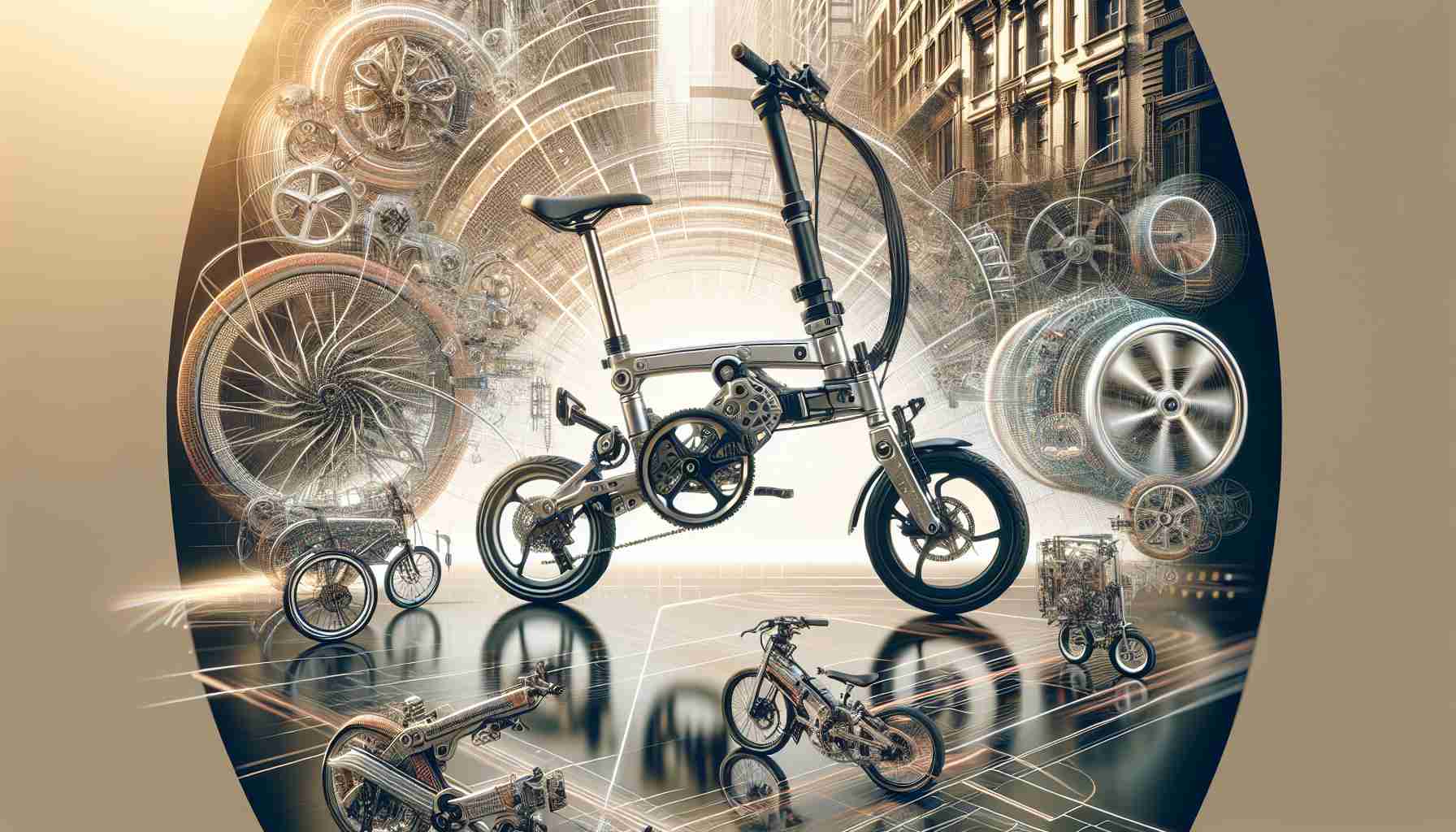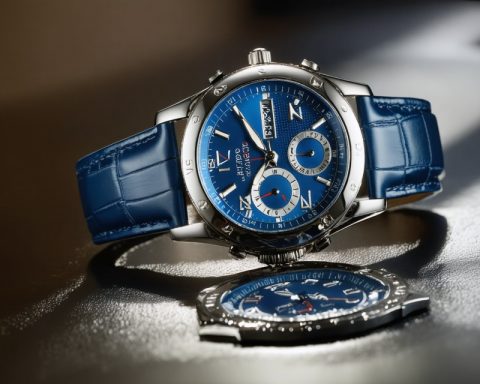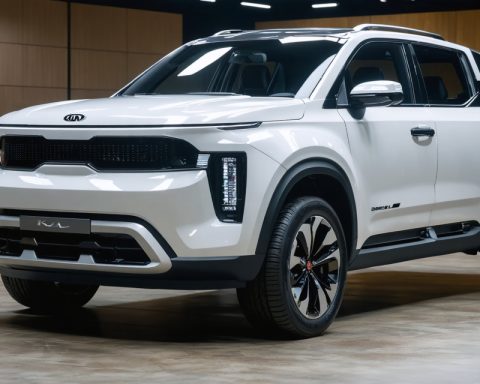Unveiling the Future of Urban Mobility: Brompton’s Electric Leap
In a world where urban innovation is reshaping transportation, Brompton takes a bold stride with its Electric G Line folding bicycle, revolutionizing the concept of portable bikes. This cutting-edge model breaks away from its predecessors, embracing a more expansive design with 20-inch tires that promise stability on rugged paths, pushing the boundaries of what folding bikes can achieve.
Redefining Riding Experiences
While traditional folding bikes have focused on compact convenience, the G Line introduces an array of advanced features such as disc brakes and a Shimano gear system, ushering Brompton into a new design era. Complemented by a potent 250-watt motor, this bike empowers riders with speeds up to 15.5 mph, transforming suburban journeys into effortless escapades.
A Greener Commuting Solution
The folding bicycle industry is rapidly evolving, fueled by growing environmental consciousness and urbanization. Analysts forecast a robust expansion of around 7% CAGR over the next five years. Products like the Electric G Line not only promote eco-friendly commuting but also enhance the appeal of cycling as both a fitness activity and a sustainable transport solution.
Challenges on the Horizon
Despite its prowess, the G Line highlights prominent industry challenges—its weight serving as a potential hindrance for urban commuters accustomed to lifting their bikes. Furthermore, while electric models captivate modern consumers, there lies a risk of alienating cycling purists dedicated to non-electric simplicity.
As urban centers prepare to accommodate the cycling boom, Brompton and its counterparts are at the forefront, tasked with harmonizing innovation and tradition. It’s a thrilling journey into the future of urban commuting, where the only constant is change.
Revolutionizing Urban Mobility: The Environmental and Societal Impact of Brompton’s Electric G Line
The introduction of Brompton’s Electric G Line folding bicycle represents a significant shift in urban transportation dynamics. As cities grow increasingly congested and air quality concerns escalate, the rise of electric bikes like the G Line offers a promising path towards more sustainable and efficient commuting solutions. This innovation not only transforms personal modes of transport but also has far-reaching implications for the environment, societal behavior, and the global economy, shaping the future of urban living.
Environmental Impact
One of the most compelling aspects of the Electric G Line is its contribution to reducing greenhouse gas emissions. Traditional vehicular traffic is a major contributor to urban pollution, exacerbating climate change. By offering a viable alternative to car commutes, electric folding bikes can significantly decrease the carbon footprint of urban dwellers. Their ability to maneuver through city landscapes without contributing to air pollution makes them an attractive option for eco-conscious commuters. As more individuals opt for electric bikes, cities could see a marked improvement in air quality and a decrease in reliance on fossil fuels.
Impact on Humanity and Society
Brompton’s innovation also fosters a shift in societal commuting habits, encouraging a more health-conscious approach to urban travel. The ease and accessibility provided by electric bikes appeal to a broad demographic, including those intimidated by traditional cycling. By lowering the barriers to entry, these bikes promote physical activity, improving public health and well-being. Furthermore, the flexibility of folding bikes allows commuters to combine cycling with public transportation, thus broadening the scope and accessibility of sustainable transportation networks.
Economic Implications
Economically, the growth of the electric bike market signifies a burgeoning sector poised to create jobs and stimulate technological advancements. As cities adapt to accommodate cyclists, there will be an increased demand for infrastructure improvements, such as dedicated bike lanes and parking facilities, fostering urban planning and development. Additionally, the shift towards electrified personal transport could drive investments in renewable energy sources and battery technologies, furthering overall economic growth.
Connecting to the Future of Humanity
In a broader context, the advent of electric bikes like the Brompton G Line illustrates humanity’s evolving relationship with technology and the environment. It highlights a societal shift towards sustainable solutions and mindful consumption. As urban populations continue to swell, innovative transportation alternatives will be critical in mitigating the impacts of overpopulation and environmental strain.
Navigating these changes requires a delicate balance between preserving the ethos of traditional cycling and embracing technological advancements. As Brompton and its contemporaries push the envelope on urban mobility, they pave the way for a future where cities are not only smarter and more efficient but also greener and more habitable. This electric leap is more than a technological milestone; it’s a stepping stone towards a sustainable and prosperous future for humanity.
Why Brompton’s Electric G Line Is the Future of Urban Cycling
In the realm of urban mobility, Brompton has taken a pioneering leap with its innovative Electric G Line folding bicycle. By enhancing traditional folding bike features, Brompton is setting a new standard for what these versatile urban companions can achieve.
Cutting-Edge Features and Specifications
The Electric G Line model moves beyond its predecessors by incorporating several advanced features aimed at enhancing rider experience. Key specifications include:
– Tire Size: 20-inch tires, providing increased stability and performance on diverse terrains.
– Brake System: Equipped with disc brakes for improved safety and stopping power.
– Gear System: Utilizes a Shimano gear system to offer seamless shifting and adaptability to varied cycling conditions.
– Motor: A powerful 250-watt motor providing speeds up to 15.5 mph, ideal for urban commutes.
Market Growth and Sustainability
The folding bicycle market shows promising growth, driven by environmental awareness and urban demands. Analysts predict a steady market expansion with a compound annual growth rate (CAGR) of approximately 7% over the next five years. The G Line model aligns with these trends by offering an eco-friendly commuting solution that appeals to both fitness enthusiasts and those seeking sustainable transport options.
Pros and Cons
Pros:
– Portability: Despite its more expansive design, the bike maintains the core benefit of folding bikes—portability.
– Performance: Enhanced features like larger tires and a powerful motor boost performance and rider confidence across different terrains.
– Eco-friendly: Supports green commuting, reducing carbon footprints for urban commuters.
Cons:
– Weight: The added features contribute to a heavier design, which may challenge riders accustomed to ultra-light folding bikes.
– Purist Appeal: Cyclists dedicated to traditional non-electric bikes might find the shift to an electric model less appealing.
Innovations and Predictions
The Electric G Line is a part of a larger trend towards technologically advanced bicycles that cater to modern urban needs. Innovations such as integrated tech features, enhanced safety mechanisms, and smart connectivity are predicted to increasingly shape the industry. Brompton and other industry leaders will likely continue to innovate, balancing modern demands with traditional cycling values.
Conclusion
Brompton’s Electric G Line folding bicycle embodies the future of urban commuting, merging the convenience of foldability with technological advancement and environmental consciousness. As urban centers adapt to growing cycling trends, innovations like the G Line will be essential in redefining city transportation.
For more information on Brompton’s innovative cycling solutions, visit their official Brompton website. Stay tuned for more developments in urban mobility as manufactures and designers strive to meet the evolving demands of city living.












